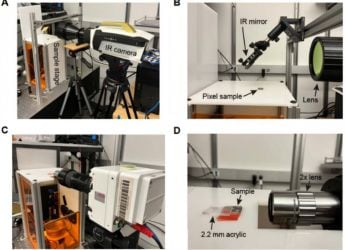- Home
- Mobiles
- Mobiles News
- Samsung Brings Faster One UI 8 Updates Using Google's Trunk Based Development Model: Report
Samsung Brings Faster One UI 8 Updates Using Google's Trunk-Based Development Model: Report
Samsung has reportedly followed Google in switching from branch-based development to the faster, more stable trunk-based model.

Samsung Galaxy Z Fold 7 (pictured) arrived with Android 16 out-of-the-box earlier this month
Samsung's recently launched the Galaxy Z Fold 7, Galaxy Z Flip 7, and Galaxy Z Flip 7 FE earlier this month, and they're the first Android smartphones to launch with Android 16, the latest version of Google's operating system. In order to speed up the process of developing Android, Google switched to a more stable and resource efficient trunk-based development model earlier this year, and Samsung has reportedly followed suit. This should enable the South Korean company to offer faster updates in the future, after long delays in rolling out its One UI 7 (Android 15) software update.
How Google and Samsung Will Use the Trunk Stable Development Model
Android Authority explains that the Trunk Stable model for Android development used by Google takes place on the company's internal Android branch. While the company builds in support for various features, they are hidden behind feature flags that can be toggled or enabled when it is time for the software to be released.
Trunk Stable is said to be considerably faster than the older branch-based development model used by Google. Previously, Google's engineers would keep adding features during the development process and merge these changes with the main Android branch once they were completed.
This process resulted in several bugs and issues that would take more time to fix. This would also delay the process of development, and the quality of the operating system would drop while the issues were resolved. Meanwhile, the trunk-based model offers greater stability and features can be enabled once they are ready.
Samsung switched to the same development model as Google, developing its One UI skin via a single development branch, Samsung Electronics EVP Sally Hyesoon Jeong reportedly revealed during a roundtable earlier this month. The company is also aiming to release One UI software updates around the same time as Google with future Android updates.
While Samsung rolled out its Android 14-based One UI 6 update rather quickly in 2023, its subsequent version was delayed by many months, and began out to eligible smartphones months after it was originally unveiled. It's unclear whether this delay influenced Samsung's decision to switch to the more efficient (and stable) development model used by Google to launch Android 16 in June, months ahead of its usual schedule.
Get your daily dose of tech news, reviews, and insights, in under 80 characters on Gadgets 360 Turbo. Connect with fellow tech lovers on our Forum. Follow us on X, Facebook, WhatsApp, Threads and Google News for instant updates. Catch all the action on our YouTube channel.
Related Stories
- Samsung Galaxy Unpacked 2025
- ChatGPT
- Redmi Note 14 Pro+
- iPhone 16
- Apple Vision Pro
- Oneplus 12
- OnePlus Nord CE 3 Lite 5G
- iPhone 13
- Xiaomi 14 Pro
- Oppo Find N3
- Tecno Spark Go (2023)
- Realme V30
- Best Phones Under 25000
- Samsung Galaxy S24 Series
- Cryptocurrency
- iQoo 12
- Samsung Galaxy S24 Ultra
- Giottus
- Samsung Galaxy Z Flip 5
- Apple 'Scary Fast'
- Housefull 5
- GoPro Hero 12 Black Review
- Invincible Season 2
- JioGlass
- HD Ready TV
- Laptop Under 50000
- Smartwatch Under 10000
- Latest Mobile Phones
- Compare Phones
- Jolla Phone
- Realme P4x 5G
- OnePlus Ace 6T
- Nubia Flip 3
- Nubia Fold
- OPPO A6x 5G
- Samsung Galaxy Z TriFold
- Poco F8 Ultra
- Asus ProArt P16
- MacBook Pro 14-inch (M5, 2025)
- OnePlus Pad Go 2
- Poco Pad M1
- Just Corseca Skywatch Pro
- Honor Watch X5
- Acerpure Nitro Z Series 100-inch QLED TV
- Samsung 43 Inch LED Ultra HD (4K) Smart TV (UA43UE81AFULXL)
- Asus ROG Ally
- Nintendo Switch Lite
- Haier 1.6 Ton 5 Star Inverter Split AC (HSU19G-MZAID5BN-INV)
- Haier 1.6 Ton 5 Star Inverter Split AC (HSU19G-MZAIM5BN-INV)
















